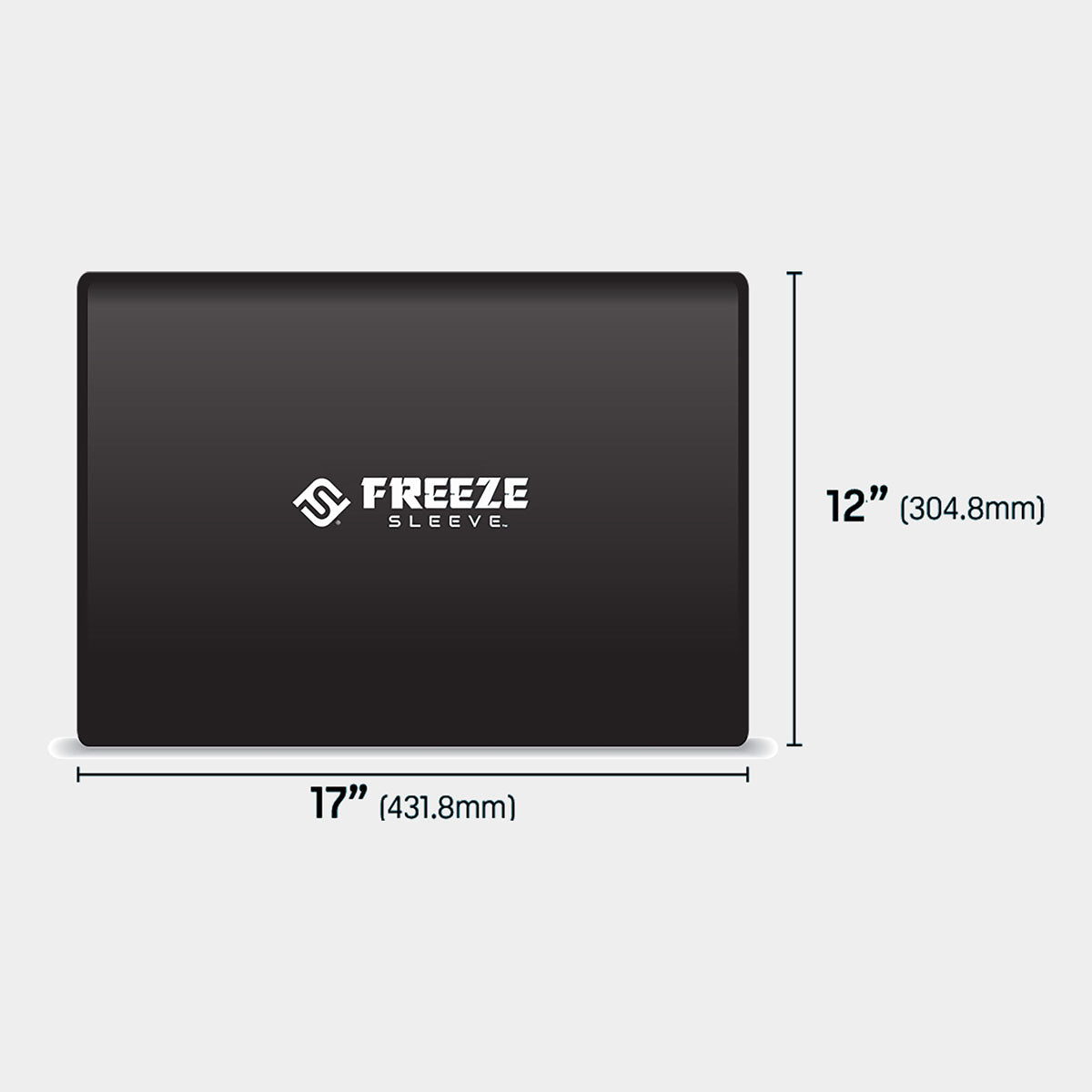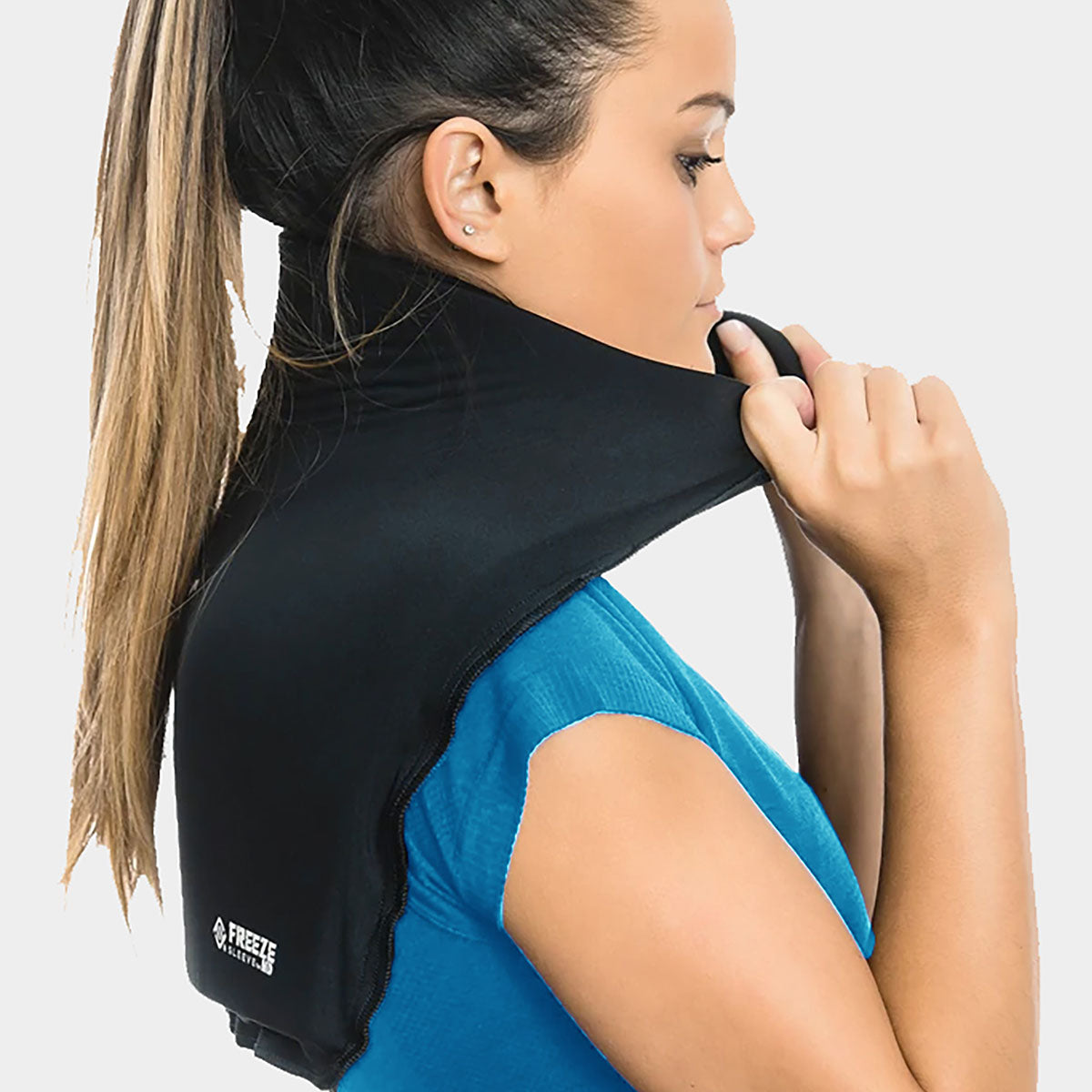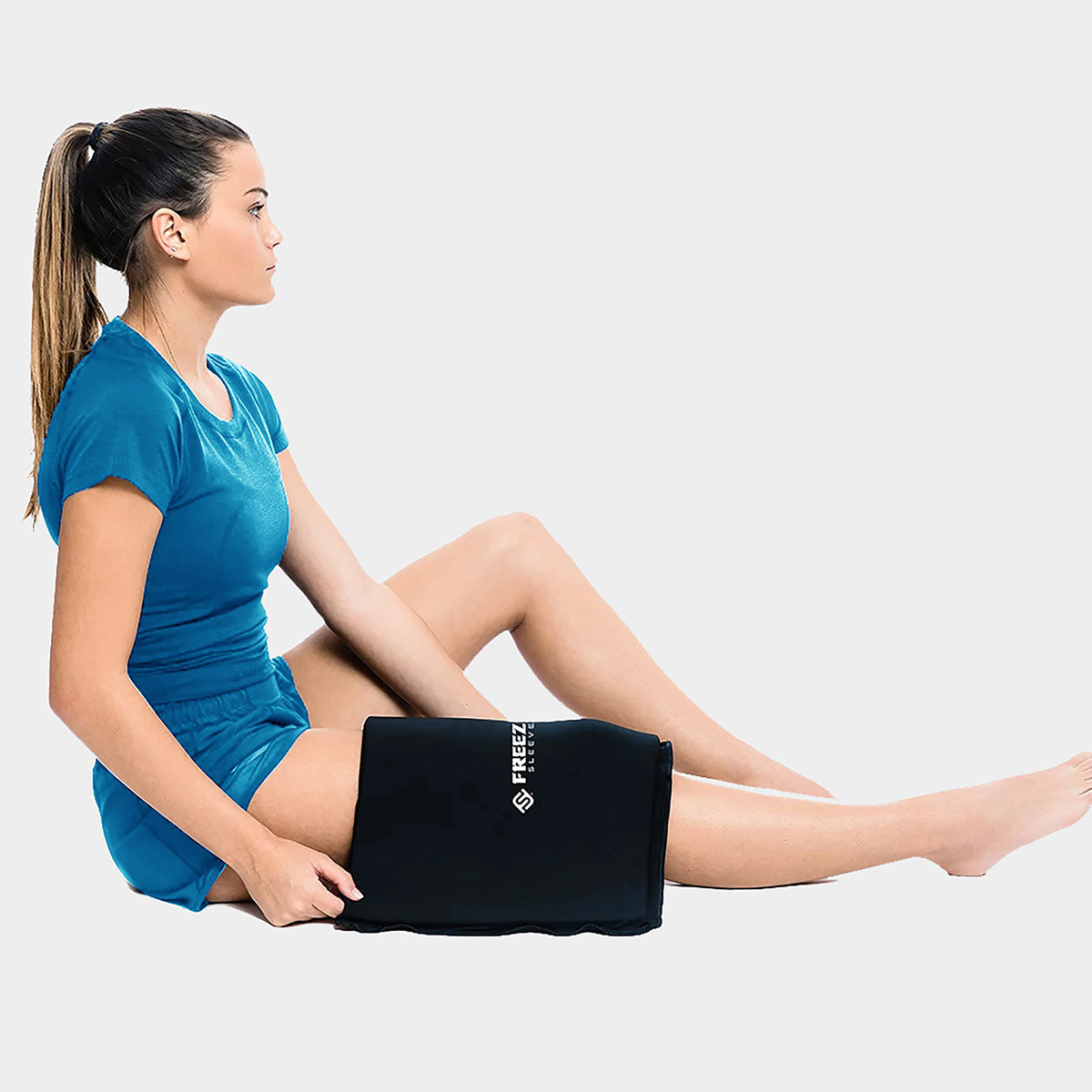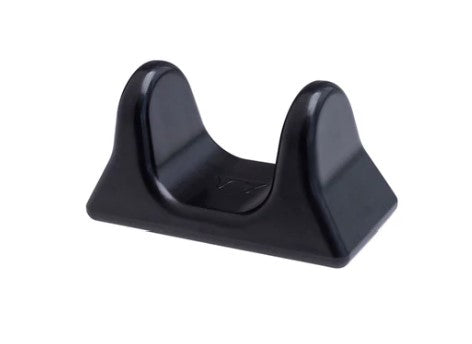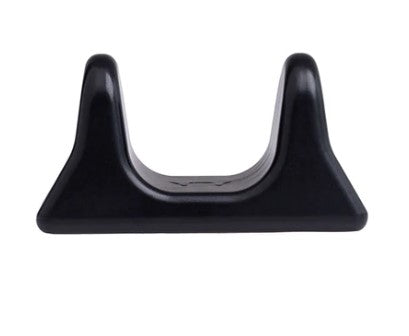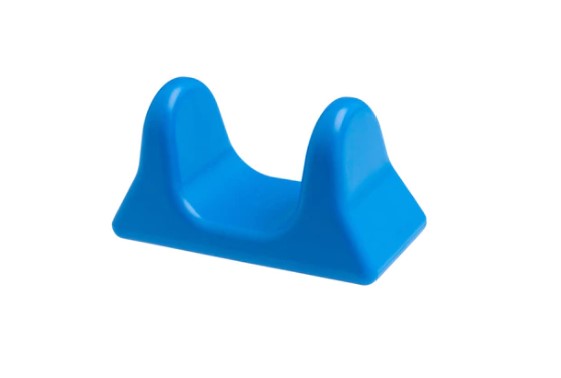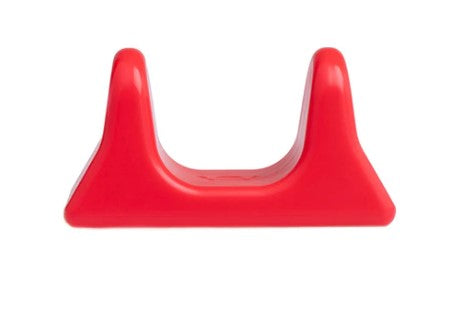
One of my favorite things is when I get messages (either emails or DMs) from athletes asking me a question about their training. Ben Pollack has been a huge source of support and growth for both my husband and me, so when he sent one of his friends to me with a question, I wanted to take a few minutes to answer it via email a bit more thoroughly. He reached out with a statement that any lifter who’s actually been injured probably knows all too well:
“I’ve got an issue with my left glute not activating, and it’s causing my left erector to be active and pumped during almost any movement. Is there anything I can do to get it to activate again? It just feels like I have zero power production coming from my glute. I have a wicked low back pump all of the time, mostly with 18” deadlift and overhead movements.”He mentioned to me that he’s almost 70 pounds stronger off the floor. Mechanically, that should tell us quite a bit about how his body prefers to move (likely a puller with a greater back than hip preference). I’ve included my email response to him below:
I'm trying to think of the best way to explain this, especially if the movements that you have some difficulty with are both overhead, as well as the deadlift. You're definitely onto what's up when it comes to the left glute not providing either stability or extension (specifically with your deadlift), and something else lacking for your overhead. I'd wager that you're also pretty intelligent, so you've probably already thought through and given simple solutions a go. The big question I ask with my strength athletes who have already tried working on things either on their own or with professionals is always "Why is it lacking?" I think the answer is a little multifaceted, both biomechanically and from the standpoint of neurological preferencing. Neurologically, you and I both know that we have patterns that we're really strong in. We're efficient in them, and when it comes to accomplishing a task, the brain will ALWAYS select the path of least resistance to accomplish the task. It's almost like, if you walk into a room FULL of people who are talking, you can still almost instantly pick out the voice of the person whom you know the best and talk to most frequently. Our brains are very much the same way with the selection of motor programs, which sort of further ingrains that program every time we load it heavier and heavier: It continues to become preferenced. These preferences not only become "stronger" from a neurological standpoint but also can change (on a small level) postural tendencies (which is our baseline from which we move) and leave certain muscles at a relative mechanical advantage or disadvantage. Every person I've worked with who truly couldn't figure out how to get the glutes to function and integrate to movement initially thinks this theory is bull: "Mechanical advantage can't change movement that much underweight." They come back around relatively quickly because you know when you have that complete loss of power. What all of this means, basically, is that your plan of action needs to be twofold: Improve the brain's ability to even feel and "talk to" certain muscles, and then make sure that you're giving the brain an opportunity to use them in the same pattern that you need them for: Deadlift and overhead. This honestly means that I'd hit your regular training but start to incorporate work at lower intensity to actually let glutes have an opportunity to catch up in your deadlift. Exercise selection is very important here: I’d suggest something against bands for hip extension (like a banded RDL, where your hips are pressed into the band at the top end), but there are a million ways you could go about choosing. Choose the one where you’re getting to the purpose the best: Whatever movements you choose should be the ones where you feel the glutes and abdominal wall co-contracting the MOST. Do what allows you to get a rigid core and glute pump. For your overhead, I'm going to come back to the mechanics of "why": Generally, you'll want to find a few muscles you can "inhibit" or "dim down a bit" while facilitating others. I'd seek to inhibit a little lat, and likely pec while facilitating left obliques, the left glute, and the left serratus. Exercises in the half-kneeling position are great for this, especially if you've done a little rolling or something to tone down the lats. Ultimately, I think you're looking at two separate manifestations of a similar issue—namely stemming from the ribcage, pelvis, and low back—leading to the preferencing of the patterns and musculature that you're already super strong in. Think about keeping that left side rigid and more pillarized. I don't know your thoughts on a lot of the diaphragmatic work (whether its RPR, DNS, PRI, etc.), but there is an area of overlap between the diaphragm and the internal obliques called the zone of apposition. When ribs are overly flared (as they are in most strength athletes, almost like a ski jump), there is no overlap, and that overlap is our ability to create a pillar. If you cannot pillarize, you will HAVE to generate stability elsewhere—namely, for YOU, your back.

yodiyim © 123rf.com
Note that this was based on one individual presentation as well as some back and forth over IG DMs, where I had a bit more background on which to form some hypotheses.RECENT: Tendinopathy Edition: Programming Variables to Consider When Returning to the Squat
Anyone who’s actually FELT this lack of power knows how frustrating it can be: Despite the EBP nerds saying, “Well, the hip is extending, so the glute must be firing." If you have felt the empty feeling, you know that you’re not firing on all cylinders. And you aren’t crazy, but it isn’t as polarizing an issue as the Insta-gurus want to make it out to be, creating camps of extremes: There are a LOT of semantics around that words “firing” and “inhibited.” The factors that contribute to this poor proprioception and the subsequent poor mechanical output are pretty deep, and I think many people who say that they have it completely figured out isn’t being intellectually honest enough to recognize that different people’s nervous systems have adapted differently and that each case is going to have some variation. Here’s what we know, with intellectual honesty: There has been a huge influx of research regarding pain and just how many factors influence what we feel. We know that pain is a complex constellation of neurotransmitter releases influencing whether a neuron depolarizes (or doesn’t), and how the brain perceives the information (in conjunction with previous experiences and “memories” or tags), as well as how it then responds with descending control over the system. Our psychological experiences, overall baseline stress levels, local changes in pH and chemistry, and beliefs also highly influence this: There is almost nothing that is done in isolation, and what an individual’s nervous system senses is, quite frankly, kind of a big deal. The big shift in this paradigm is that we’ve traditionally thought of pain as an “input” or something we feel directly: Touching a hot fire is painful, and although, we have certain types of nerve fibers that allow more threatening messages to be sent more quickly (and that are more responsive), the actual feeling of pain is much more of an output derived from a whole slew of information that the brain is getting in the moment, combined with past experiences. As much as this athlete reached out to me not necessarily with “pain,” what he actually senses is a HUGE driver in the equation. It tells us a lot about his brain’s read on a situation and how to best handle it. I’m not going to get into the semantics of “firing” or “not firing” because in my experience, even those situations fall into different categories, but anyone who has actually FELT a change in proprioception (or the ability to actually sense a muscle) AND seen a concurrent change in performance because of it knows that there’s something deeper than simple “activation” drills to get things working again. The body (and brain) need to be taught to integrate together, concurrently, so that there is a constellation of all of the things that have to happen for us to move heavy weight with appropriate control. If we know that pain is as complex as we’re learning it to be, and just how complex and incredible our nervous system is, I have a very strong hunch that the proprioceptive ability to feel and integrate muscles (and therefore what we “sense” with firing or not), might also be more complex than simply “stability permits strength.” It’s a great statement to cover the bases, but we have no idea what other factors and input we might be influencing with these drills. There are a litany of factors that contribute to it, and we cannot possibly isolate one or the other… but if the brain can start to perceive a “threat” enough to generate a pain response based in part on previous experiences (and ZERO current/acute need for that response, as in chronic pain cases), I’m going to go on a limb and say that the ability to sense and feel a muscle firing (and therefore the mechanical advantage that it provides for certain movements, such as hip extension) is both individualized and important, especially if there’s an objective measure (such as dramatically decreased strength in a range of motion, as in this lifter’s case). There are a bunch of other things I’d consider and ask if I was working with him formally to delineate where to intercept and how to modify training to produce better…well, production…but the big picture is that his body needs to learn to feel a glute in the specific range that he has a hard time utilizing it. My clients know that I talk a LOT about the Peter Principle in business, and I use it to some degree to talk about how our neuromuscular system preferences what muscles are “used” or what we feel (sometimes it’s important, and other times, it’s less important). I hope that this is helpful to some: The left-sided low back pump is SO common, and your case might be different from that of the lifter above. When I sent this to my husband for content editing, he mentioned one big point:
I don't think that you said this explicitly, but one of my takeaways was, "This is another reason you should actually do your damn PT exercises every day." You won't change those motor patterns and regain proprioception if you're inconsistent.Reach out if I can help.
















































